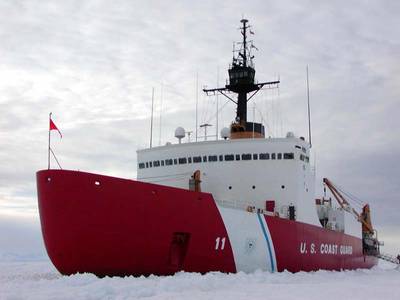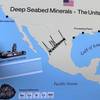The U.S. Coast Guard released a proposed acquisition timeline and requirements for two new heavy U.S. icebreakers that could cost $1 billion each and said it would meet with interested companies during an industry day in March.
Coast Guard Commandant Admiral Paul Zukunft told an event hosted by the Center for Strategic and International Studies that notice was intended to get information from companies about their ability to build and develop icebreakers that would be in use for 40 years and to explore options such as leasing.
In a federal notice, the Coast Guard spelled out key notional requirements for the new ships, including the ability to break through ice with a thickness of at least 6 feet at a continuous speed of three knots, and the ability to break a single-pass channel through ice to a width of at least 83 feet.
It said the ships would also have to operate for at least 80 days without replenishment of food or fuel, and have a minimum range of 21,500 nautical miles at 12 kts in ice free waters.
The Coast Guard said it had not finalized an acquisition strategy, but it hoped to release a draft request for proposals in the first quarter of fiscal 2017, and award a contract in the last quarter of fiscal 2018 or fiscal 2019.
Huntington Ingalls Industries Inc, which built the newest U.S. icebreaker and delivered it in 1999, said it was "absolutely interested" in building icebreakers for the U.S. Coast Guard.
General Dynamics Corp, the other large U.S. military shipbuilder, has also expressed interest in the program, as have other shipyards, according to the Coast Guard.
President Barack Obama in September called for the United States to accelerate plans to buy at least one new heavy icebreaker for the U.S. Arctic by 2020, instead of the previous goal of 2022. Each ship is likely to cost around $1 billion.
Melting sea ice in the region has increased traffic and could open the Arctic to more shipping, mining and oil drilling, increasing the potential for ships to be stuck in ice that still covers the region for much of the year.
Zukunft said the United States also needs icebreakers to resupply national security infrastructure in Antarctica.
He gave no details about funding for icebreakers, and said the Coast Guard's fiscal 2017 budget request was still being finalized with the White House Office of Management and Budget.
Zukunft said companies could look at licensing existing designs built in other countries to speed up the process.
Senator Lisa Murkowski, an Alaska Republican, said she was optimistic that 2017 budget request, due to be released on Feb. 9, would include initial funding for icebreakers.
The United States has only two operational icebreakers, plus another heavy icebreaker that is not in commission. Russia has 42 icebreakers with another 12 ships planned or under construction, and China has two, Zukunft said.
The Coast Guard has warned that as the Arctic opens to tourism and oil drilling, the United States risks not having enough capacity to carry out search and rescue and oil spill response missions.
Zukunft said a recent study concluded that the Coast Guard needed three heavy and three medium-sized icebreakers, but the current floor was at least two heavy icebreakers so one vessel could free the other if it became trapped in ice. It would also be too costly to buy and build just one icebreaker, he said.
(Reporting by Andrea Shalal; Editing by Jeffrey Benkoe, Meredith Mazzilli and Diane Craft)









